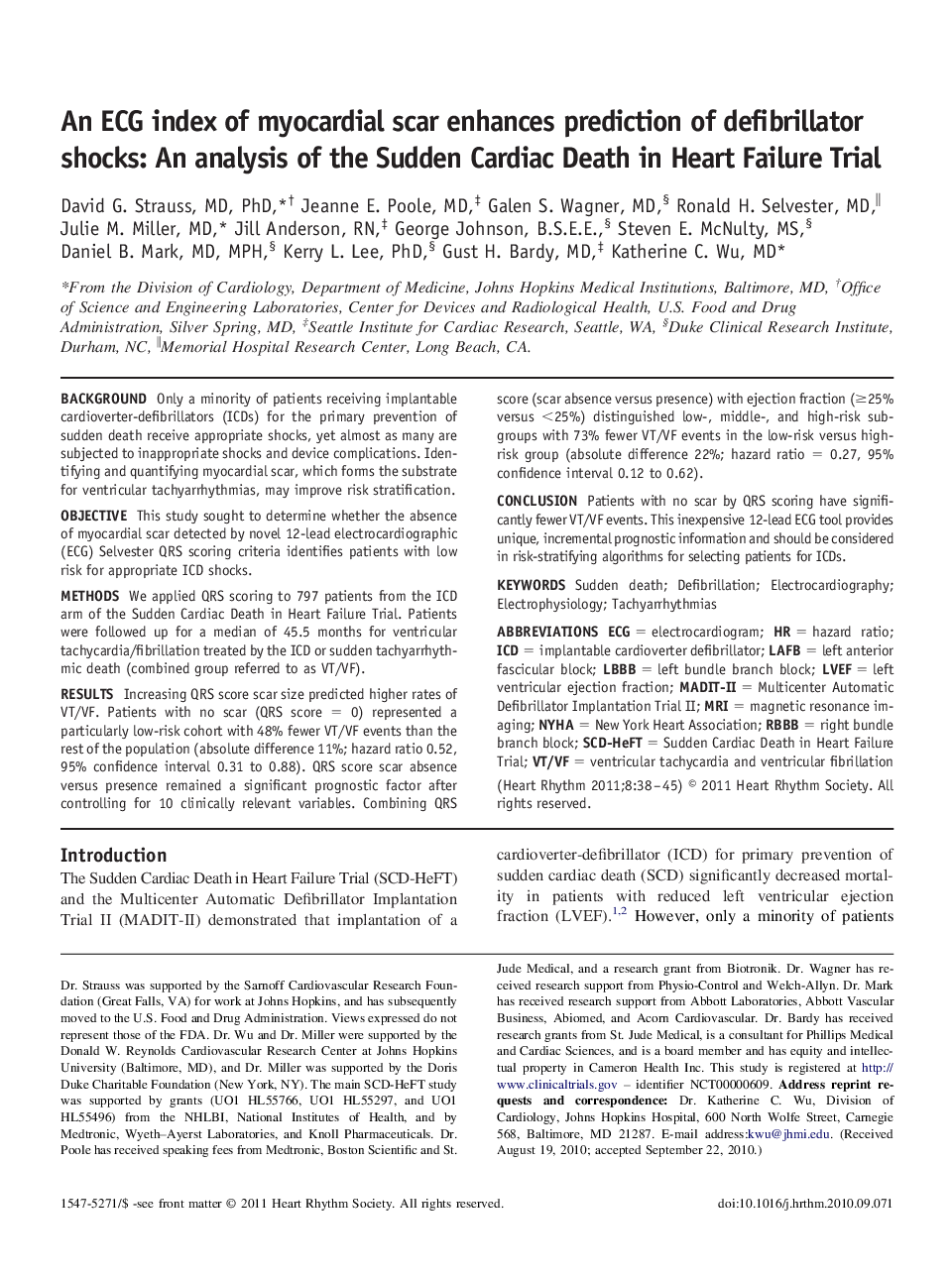| کد مقاله | کد نشریه | سال انتشار | مقاله انگلیسی | نسخه تمام متن |
|---|---|---|---|---|
| 2923828 | 1175887 | 2011 | 8 صفحه PDF | دانلود رایگان |

BackgroundOnly a minority of patients receiving implantable cardioverter-defibrillators (ICDs) for the primary prevention of sudden death receive appropriate shocks, yet almost as many are subjected to inappropriate shocks and device complications. Identifying and quantifying myocardial scar, which forms the substrate for ventricular tachyarrhythmias, may improve risk stratification.ObjectiveThis study sought to determine whether the absence of myocardial scar detected by novel 12-lead electrocardiographic (ECG) Selvester QRS scoring criteria identifies patients with low risk for appropriate ICD shocks.MethodsWe applied QRS scoring to 797 patients from the ICD arm of the Sudden Cardiac Death in Heart Failure Trial. Patients were followed up for a median of 45.5 months for ventricular tachycardia/fibrillation treated by the ICD or sudden tachyarrhythmic death (combined group referred to as VT/VF).ResultsIncreasing QRS score scar size predicted higher rates of VT/VF. Patients with no scar (QRS score = 0) represented a particularly low-risk cohort with 48% fewer VT/VF events than the rest of the population (absolute difference 11%; hazard ratio 0.52, 95% confidence interval 0.31 to 0.88). QRS score scar absence versus presence remained a significant prognostic factor after controlling for 10 clinically relevant variables. Combining QRS score (scar absence versus presence) with ejection fraction (≥25% versus <25%) distinguished low-, middle-, and high-risk subgroups with 73% fewer VT/VF events in the low-risk versus high-risk group (absolute difference 22%; hazard ratio = 0.27, 95% confidence interval 0.12 to 0.62).ConclusionPatients with no scar by QRS scoring have significantly fewer VT/VF events. This inexpensive 12-lead ECG tool provides unique, incremental prognostic information and should be considered in risk-stratifying algorithms for selecting patients for ICDs.
Journal: Heart Rhythm - Volume 8, Issue 1, January 2011, Pages 38–45